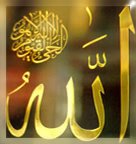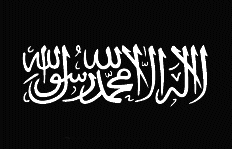Muslims Contribution to India
By Shadab Hussain
MMG (Muslim Media Group)
Of late, Muslim community is alleged as a liability to India India
Towards making of such extreme hate and violence, a campaign of misinformation often starts which leads to discrediting the hate target of anything good. By distorting history and using false claims, a feeling emerges in general public that hate targets have done no benefit to nation and thus deserves to be expelled out. On the same lines, questions are asked like “What have Muslims done for nation?â€, “Muslims have only destructed the nation and not constructed it†etc. Since general public is stripped of the correct knowledge and facts, people often start believing it. This article aims to provide an all round view of Muslims’ contribution to India and world as well so that general public is provided with correct information to enable a conscious decision in mind.
Let us now compare contribution of each community to India
In language & Literature, Muslims have contributed to the language evolvement and refinement as well as preserving and adopting foreign languages. Muslims preserved the foreign languages like Persian, Turkic, Pashto and Arabic for a long time till today. Persian was official & elite language of administration in many ruling dynasties of India India India India India India India
In cookeries & cuisine, Muslims stand again at top with wide variety of cuisine many of which are unique to Indian Muslims. Some of the most popular eatables in India are Rice (Biriyani, Pilaf, Zarda), Kebab (Shamee Kebab, Boti Kebab, Seekh Kebab), Breads (Tandoori, Naan, Maande), Deserts (Sewaiyan, Sheer-Khurma), Drinks (variety of non-alcoholic Sharbat) etc. It was the Muslims who introduced Tandoor (Clay oven) to India India
In Attire & Clothing, Muslims introduced some of the finest & dignified clothing in a land where before Islam, men and even in some places women, used to wander bare chest. Muslims introduced the dignified clothing like Kurta Pyjama, Pathani, jacket, Shervani, Topi (Skull Cap) for Men and Shalwar Kameez, Dupatta, Sharara, Hijab, Purdah etc for Women. Kurta Pyjama, Shervani for Men and Shalwar Kameez for Women are distinct features of Indian Muslims. Shervani has been the dress code for most presidents of India India Anna University India India
In religious studies, Darul-Uloom, Deoband), Nadwatul Ulama (Lucknow Saharanpur South Asia . People across Asia enroll in the above mentioned Madaris for the religious studies. Darul-uloom, Deoband is often regarded as Al-Azhar of Hind and a very important place of learning among Hanafi adherents. Wide spread reformist movement like Tabligh, initiated by Moulana Iliyas originated in India, is currently one of the biggest movement world over and is currently operational in almost all countries of world. Tabligh Jamat holds its annual ‘Biswa-Ijtema’ in Bangladesh India India
In Modern Education, Muslims were the pioneer with prominent leader like Sir Syed Ahmed Khan, Ali brothers, Hakeem Abdul Hameed, Badruddin Tyabji etc. Over the last 700 years of Muslims rule, the only education infrastructure was of Madarsah. Other communities did not have any organized and structured schooling system. Not just Muslims but other communities too relied on Madaris for literacy in languages as well as Medicine. Madarsas are not just religious study centers but are centers for languages, logic, medicine, history etc. When British started opening English based Universities in India Osmania University India
In Sports, Muslims have contributed in all the dimensions. Muslims have held captaincy in Cricket, Hockey and Tennis etc. While Mansur Khan Pataudi was youngest captain, Ghouse Mohammed was the first Indian to enter quarter finals in Wimbledon , Sania Mirza is the top ranker among Women from India India
In Architecture, Taj Mahal, which is synonymous with India Delhi Delhi Kashmir and Lal Bagh in Bangalore Salar jung Museum India India
In Academics and Technology, Tipu Sultan was pioneer of Rocket technology and APJ Abdul Kalam is father of missile program in India India India India
In Politics and Administration, Zakir Hussain, Fakhruddin Ali Ahmed, and APJ Abdul Kalam have been the president of India India
For comparison sake, let’s look into Arts, Cinema, Music and Painting as well. In Painting, MF Husain, Tyeb Mehta, and Yusuf Arakkal are the leading painters from India Naushad Ali , AR India
Muslims were the pioneer of freedom fight against colonial British. British were initially resisted by armies of Nawab Sirajuddaula of Bengal at the battle of Plassey in 1757. Haider Ali and Tipu Sultan were resisting British in Southern India between year 1760 and 1800. Shah Abdul Aziz Dehlawi issued a fatwa of India
Some may object to this paper while some may point out the infamous actions of Muslims being overlooked however it must be noted that each and every community in India
Reading above mentioned glory of Indian Muslims, it becomes clear that Muslims have contributed highly towards freedom, culture, society, heritage, administration, development of nation. With contribution of such a magnitude and variety they have a right to ask those who challenge Muslims about their contribution, of what their own caste/community has contributed to India Independence
Author Profile
Shadab Hussain is an IT professional with interests in contemporary Muslim issues and History. He is a regular columnist with MMG. He can be reached at Shadab@indianmuslims.org.
[i] ‘Badruddin Tyabji’, Congress Sandesh, http://www.congresssandesh.com/AICC/history/presidents/badruddin_tyabji.htm
[ii] ‘Every Eighth Indian’, Indian Express, http://indianexpress.com/full_story.php?content_id=31472
[iii] ‘They too fought for freedom’, By Asghar Ali Engineer, http://www.just-international.org/article.cfm?newsid=20001162





No comments:
Post a Comment